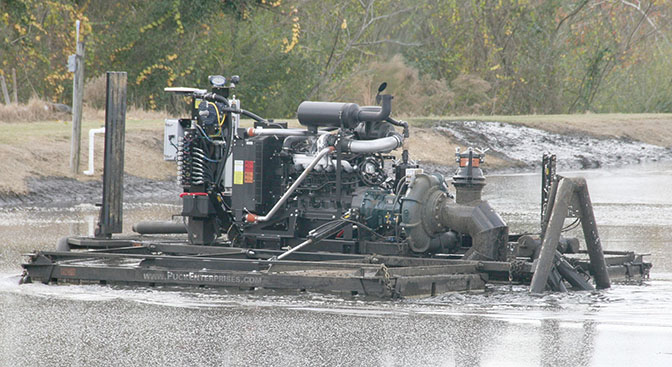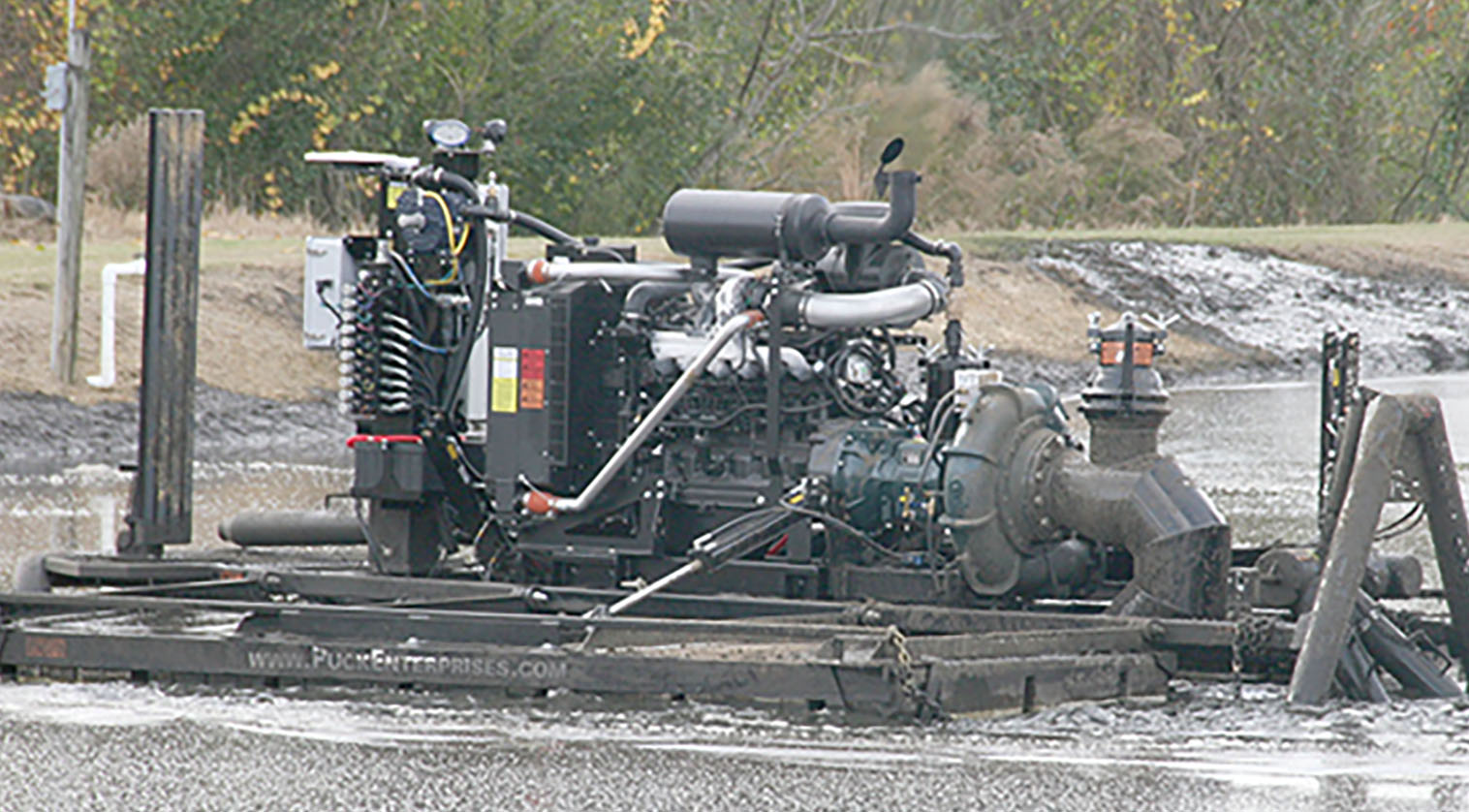Remote-controlled boats could be a valuable tool for helping Georgia dairymen recycle waste on their farms, according to University of Georgia animal and dairy scientists.
Every day, dairy farmers must clean and maintain cattle barns, which includes washing out the manure that accumulates daily. This manure is sent to a lagoon located on-site, where it is stored before it is spread on fields as fertilizer.
Over time, the solids in the waste settle to the bottom of the lagoon. This waste cannot be used as nutrient-rich fertilizer if the lagoon isn’t stirred up or agitated periodically. The remote-controlled boats, however, contain high-volume pumps that can stir up that water before it’s transferred to a field.
“The agitation boats can suspend the solid manure at the bottom of your lagoon up into the liquid, so you can get the nutrients that are stored in the bottom of your lagoon up into suspension and delivered out onto your soils,” said Melony Wilson, a UGA animal waste management specialist based in Athens, Georgia. “Those are nutrient resources that these producers use to grow their crops. They grow crops, produce silage and feed it back to the cows. It’s the ultimate recycling process.”
Wilson said a lagoon that’s properly maintained is designed to accumulate solids for five to 10 years and then needs to be agitated. Farmers need to agitate the solids out of the lagoon bottom in order to achieve better success with their lagoon and to increase storage capacity.
“When the solids build up, you lose your storage capacity. Once you’re losing your storage capacity, you have to go in and get those solids stirred up and get them out of your lagoon, so you’ll have maximum storage capacity to hold all the nutrients that are still coming into the lagoon from your barns,” Wilson said.
UGA animal and dairy scientist John Bernard said that agitation boats are more effective at stirring up the solids at the bottom of lagoons than standard static pumps, which are widely used.
“These boats will get out to all areas of the lagoon. They have high-capacity pumps to agitate the solids and get them in suspension. Then, we can pump them out and have a more uniform product when it’s being applied out on land,” Bernard said.
The two UGA scientists stress the importance of knowing how manure flows in fields based on the farmer’s tillage practice. Tillage makes a substantial difference in how the nutrients move and how they settle into the ground.
“Our goal with nutrient management is to get those nutrients into the soil profile to grow the crops. It doesn’t do any good to put it out here and let a rainstorm cause the nutrients to run off into the nearest ditch. That causes water quality problems,” Wilson said.
Wilson and Bernard are part of the Animal Waste Awareness in Research and Extension (AWARE) team of scientists. The AWARE team consists of experts in a variety of areas related to animal waste management, environmental regulations, agricultural economics, crop and soil science, water quality and agricultural pollution prevention.
For more information on how to safely manage animal waste on farms, visit aware.uga.edu.








